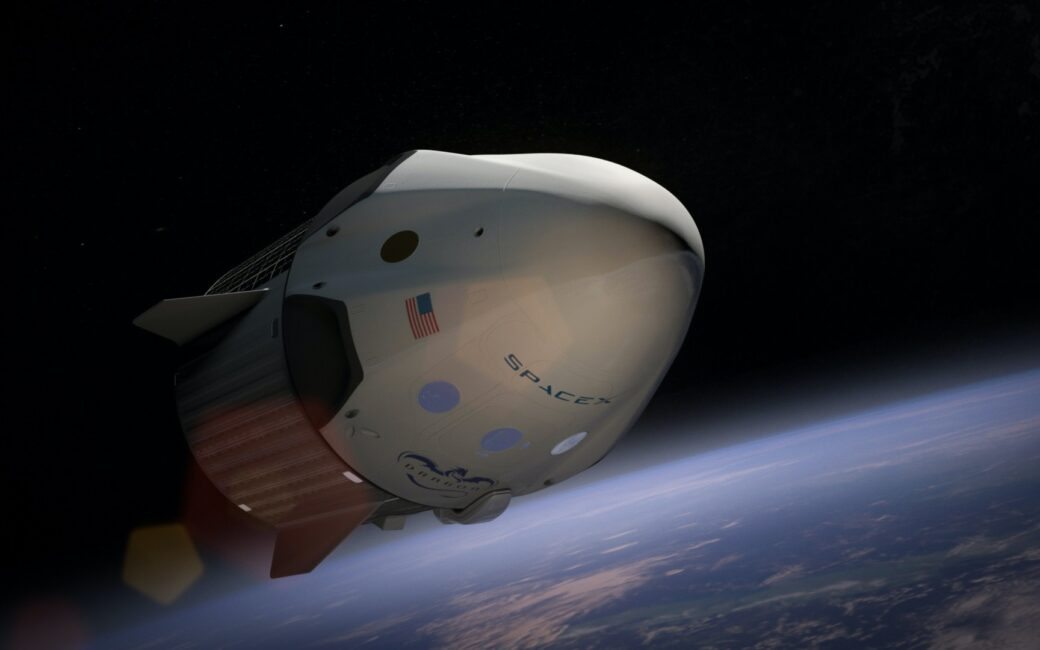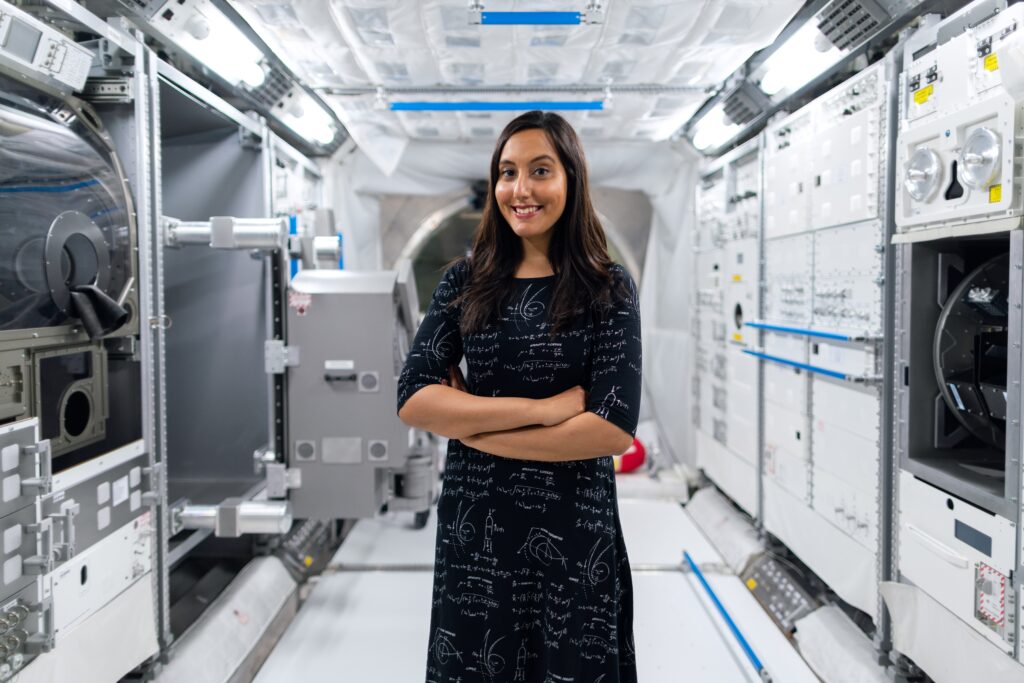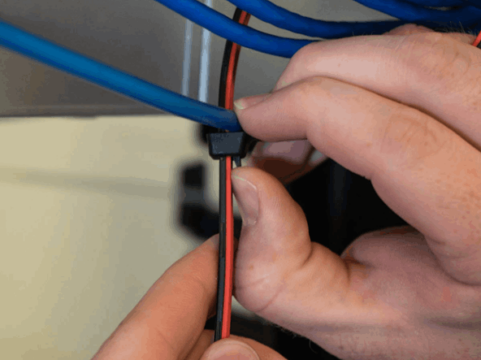The Importance of ERG Materials in Advancing Aerospace Technology

- June 27th, 2023
- Categories: Uncategorised
ERG aerospace materials are the building blocks for space, biotech, semiconductor manufacturing, biomedical, scientific fields, and high-technology industries that require top-quality, reliable materials.
Established in 1967, the ERG Aerospace Corporation is a leading manufacturer of trusted materials such as producing foamed metals, carbons, and ceramics for aerospace industries. Each material offers numerous chemical, electrical, and physical properties.
These ERG materials are high-performing design solutions, however, why else are they so essential to advancing aerospace technology? A team of engineers require the best in terms of materials, aerospace tooling, and fasteners for any space project, and ERG materials play a big role.
What Does the ERG Aerospace Corporation Do?

Engineering
For over 50 years, the ERG Aerospace Corporation has designed and manufactured Durocel foam and metal components for the aerospace industry. Making use of data testing, the corporation can predict and calculate the performance of Durocel foams for structural applications and impact absorption.
Bonding and brazing
Bonding and brazing increase heat transfer efficiency, resulting in higher-quality ERG materials for the aerospace industry. Reliable materials are key to spacecraft surviving outer space.
Heat treating
Heat treatment maximises the ligament durability and strength of Duocel metal foams.
Machining
Both manual and CPC machines are used to create high-quality, precise components for the aerospace industry. ERG incorporates fabrication and manufacturing processes with device manufacturers and always meets performance requirements.
Plating and chemical films
As Duocel foam materials can take on extra plating or chemical films, this increases overall corrosion resistance, thermal transfer properties, electrical conductivity, and surface finish. Common metal plating includes gold, silver, nickel, and platinum. Likewise, chemical films protect space flights from harsh environments.
Testing
As ERG materials need to withstand the harsh temperatures in aerospace, extensive testing is put in place. Non-Destructive Testing and Destructive Testing methods such as corrosion, airflow strain, salt or leak testing, and filtering can assist engineers in approving these materials for use outside the earth’s atmosphere.
The Definition of ERG Materials
ERG materials are innovative and strong enough to withstand the temperatures of space, so it is no wonder they are used for scientific research and application. These materials are constructed of ceramic and metal foams, essential for aerospace structures to survive harsh outer-space environments. Aerospace tooling and consumables include Dotco tooling, Eddie bolt tools, deburring tools, and a variety of drilling equipment.
What is Duocel Foam?
Just as aerospace fasteners and countersink tooling are essential to the inner workings of a spacecraft such as widening a drill hole, ERG materials like Duocel Foam enhance structural integrity.
As a foam structure that contains ligaments that form cells with open pores, they are solid and stronger compared to other foams. Fluids can easily pass through the structure and is an excellent option for projects that require a lightweight, high-performance solution.
Base material
The base material of Duocel benefits its performance, so it is important to consider your choices. Whether it is made from carbon, ceramics, or metals, this can affect other properties. For example, choosing an aluminium metal foam is useful for functioning as a metal absorber, whereas carbon foam can assist with high electrical conductivity.
Pore size
The openness of the Duocel foam is due to its pore size and is important for heat exchangers, electrodes, and air oil separators as it can maximise the area it can work with.
Relative density
The ligament cross-section of Duocel foam is useful in terms of impacting its strength and can support energy absorbers, structural elements, and heat exchangers.
Structures of Duocel foam
Duocel metal foam
Made from numerous metal alloys, Duocel metal foam can be constructed to suit any strength, surface area, heat transfer properties, and flow in terms of engineering design requirements
Duocel copper foam
Copper Duoc.el foam is stronger and thermally conductive, forming flexible cells with open pores, and has fully customisable properties in terms of strength and geometrics.
Duocel carbon (RVC) foam
Also known as Reticulated Vitreous Carbon, Duocel carbon is an almost pure carbon structure with high electrical conductivity and surface area.
Duocel ceramic foam
Duocel ceramic foam can withstand extremely high temperatures, is rigid, permeable, and is made from Silicon Nitride, Silicone Carbide, Boron Nitride, and several ceramic materials.
What Are Erg Materials Used For?
Air oil separators
Commonly used in aircraft engine gearboxes, air-oil separators are compact and very lightweight. They split oil from hot exhaust gases where a higher performance is required.
Heat exchangers
When traditional methods of stablisation don’t work, a heat exchanger is required. The metal foam provides double the cooling compared to a traditional fin heat exchanger.
Energy absorbers
Diffusing kinetic mechanical energy, energy absorbers can deflect or compress this energy over an extended distance.
Baffles and breather plugs
If you’re aiming to prevent surges in liquids, baffles are excellent as they have an open-cell nature and can seamlessly flow fluids through the material.
Co2 scrubbers
This metal foam is a heat exchange and chemical support for the atmosphere carbon dioxide control system on the space shuttle on the International Space Station.
Filters
Used in high-temperature applications that are higher in temperature compared to conventional ceramic and metal foams.
Flame arrestors
Providing up to 80% heat production, flame arrestors prevent flammability and can protect against foreign debris, hazards in the environment, and EMI.
Foam battery electrodes
These electrodes create the perfect environment for flow through electrodes as it combines the electrochemical properties of solid glassy carbon. They can improve energy storage, electrochemical reactions, and battery efficiency.
Acoustic applications
To reduce sound colourations, acoustic applicators are made from carbon and aluminium, helping with electrical and wind shielding. This helps to produce clearer sound recordings.
Cryogenic tanks
Utilising aluminium foam, these cryogenic tanks can keep solid cryogen at a solid temperature, increasing longevity.
EMI shields
This shield works as a conductor, reducing electromagnetic interference and acting as a shield against electromagnetic waves.
Optics/mirrors
Fabricated for airborne laser communication, these optics are incredibly durable and include a stable isothermal platform.
Biomedical applications
Mimicking the same material in the human body, biomedical applications can assist in the regeneration of bones within the human body or replace bones for rehabilitation purposes.
Benefits of Using ERG Materials in Aerospace
ERG materials have a range of benefits to the aerospace field, allowing engineers to create structures that are efficient and safe to fly. In terms of fasteners, you can explore the AN, MS, and NAS Hardware, Hi-Lok Fasteners, Specialty Fasteners, Cable Tie Mounts, and Motorsport Fasteners.
Metal foam
As a structure made up of solid ligaments, metal foam is not only customisable, but also used for thermal management such as transferring heat, fluctuation control, flame arrestors, and energy absorption, and is an excellent high-strength material for any aerospace structure.
Aluminium foam
Aluminium has many mechanical uses such as structural components and customisable shapes and strength, isotropic compression, enhances thermal performance, and can be used to separate air and oil.
Carbon foam
Carbon foam has corrosion resistance, works as an electrical conductor for low fluid flow, is very lightweight for aerospace structures, is scratch-resistant, and heat transfer is accelerated.
Copper foam
A thermal conductor, copper foam has customisable properties in terms of shape or weight, increases thermal performance, and can work as part of an assembly by using brazing or adhesive bonding.
Ceramic foam
Ceramic foam supports energy absorption, easy liquid flow, low-pressure drops, electrical and thermal conductivity, corrosion resistance, and stability even at incredibly high temperatures.
Benefits of Alloy Materials in Aerospace
Aluminium alloys
Aluminium makes up a large proportion of aircraft structural weight. It is resistant to corrosion, reliable, lightweight, and high in stiffness and strength.
Titanium alloys
Titanium alloys have low thermal expansion, heat resistance, high strength, and cryogenic embrittlement resistance, and mainly reside within the engine components and airframe.
High-strength steel
As the most used structural material used for aircraft and other markets. This material is a high-strength steel that can handle high temperatures and is used in the aerospace field for bearings, gearings, and undercarriage applications.
Aerospace composites
Fiber reinforced polymer and fiber metal laminates (FML) have frequently competed with aluminium alloys, and hold a higher strength and stiffness compared to other alloys at medium temperatures. Carbon fiber is useful when high-impact resistance is needed.
Applications in Electric Propulsion Systems for Aircraft
A propulsion system is necessary for an aircraft to sustain flight and is a force that propels an aircraft’s weight forward. ERG materials are incredibly helpful in terms of keeping an aircraft safe during lift-off. As for electric propulsion systems, it is not limited in terms of energy, but only by electrical power.
With electric propulsion, operational challenges need to be successful, such as station keeping, interorbital transfer, interplanetary cruising, air drag control, altitude control, long endurance missions, and more.
- Space transportation, such as launcher kick stages.
- LEO, or earth observation, constellations, and earth science.
- Space exploration, space science, and interplanetary.
- Telecommunications, or GEO.
- Navigation, or MEO.
Types of Propulsion Systems for Aircraft
- Primary propulsion systems. Different propulsion systems can affect the aircraft’s thrust. With aircraft propulsion systems, the aircraft’s weight plays a big part.
- Auxiliary propulsion systems. An auxiliary power unit or APU allows an aircraft weight to operate on its own without ground support, such as an external air conditioning unit, high-pressure air start cart, or a ground power unit.
Choose Aerospace Tooling Advancements at Applied Fasteners and Tooling
Top ERG materials are key to a high-performing spacecraft and can support space engineers by providing them with a safe, reliable structure. With Applied Fasteners and Tooling, you can experience only the best in terms of aircraft tools and fasteners for your upcoming aerospace project.
Searching for top-quality aerospace fastener removal services? Whether you are looking for tooling consumables, spacecraft fasteners such as Hi Lock tooling, MS fasteners, aerospace drills, Cherrymax within our Cherry Fasteners range, or Click Bond fasteners, your spacecraft will be ready for testing. Contact us today to discover our services and a quality-certified approach to the most innovative tooling in the industry.






